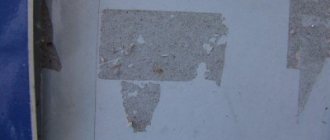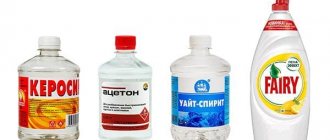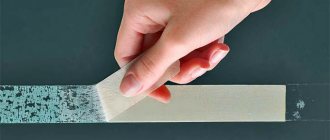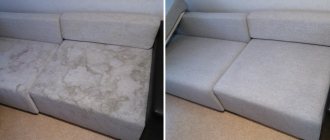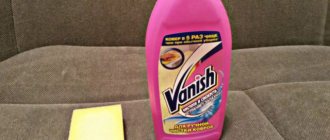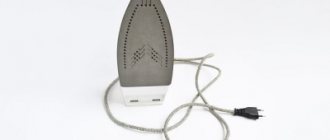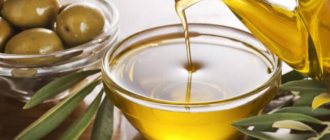Scotch tape, although not the most reliable adhesive, is nice to use as a temporary solution for some purposes. For example, broken pieces of furniture are held together with tape until construction glue is purchased, torn parts of textbooks, toys, etc. Despite the fact that the tape does not always stay in place for a long time in the place where it is placed, traces of it remain difficult to remove.
Surely each of you has encountered the fact that after purchasing, for example, a microwave oven, there were strips of tape left on its body that were used to stick the price tag, and there was no way to completely remove it. Meanwhile, the adhesive tape remaining after removing the transparent tape darkens, collects dirt, and spoils life with its terrible appearance.
In this material we will look at how to remove glue from tape safely and quickly.
How to remove glue from tape?
Removing tape with oils
So, first of all, the tape can be removed with the simplest means that almost everyone has at home. We are talking about oils of plant origin. Let's look at the table to see what types of it we are talking about.
Table 1. Which oils can remove traces of glue from adhesive tape
| View | Description |
Edible vegetable oil | This category includes vegetable oils that we eat, namely:
|
Essential vegetable oil | Essential vegetable oils are extracts-concentrates of nutritious biological fluids of various plants. They can only form inside flowers, grass trees, etc. Moreover, their composition is very concentrated; these active substances have strong physiological and pharmacological properties. You can use the following as a tape remover:
|
The use of oils is safe, as they are natural solvents and are not capable of harming humans. However, it must be said that the individual occurrence of allergic reactions in people with hypersensitivity is still possible, therefore, when wiping the adhesive from the tape using oils, it is better to do this with gloves.
Oil removes tape marks best from:
- leather and leather products;
- leatherette;
- hard surfaces.
Removing traces of tape is not easy; you need to liberally sprinkle the stained area with oil and wait until all the dirt and sticky mass dissolve
Oil will not cope with removing adhesive tape from the surface of products whose materials absorb liquids, for example, fabric or unvarnished wood.
Step No. 1 - prepare the necessary devices
So, we have a surface contaminated with traces of tape, hard, leather or otherwise, which is unable to absorb liquid. Our task is to cleanse it, therefore, we should stock up on:
- vegetable oil (preferably essential oil, it acts more intensely);
- two clean napkins;
- a bowl of warm water;
- soap.
It is better to choose an essential oil for use that is colorless and has a slight odor so that you do not get a headache from using it. However, if you love the smell of a particular oil, you can use it without fear.
Prepare essential oil, cotton pad, rag and soap with warm water
For those who have any breathing problems, it would be wise to protect their respiratory system with a mask.
Having collected everything you need, we proceed to cleansing.
Step No. 2 – cleaning the contaminated area
Take the purchased oil and pour it onto the remaining glue, or saturate a cotton pad with it and apply the latter to the contaminated area. You will need to leave everything in this position for an hour and a half for the glue to soak. Then soak the new disc in fresh oil, rub it over the soaked glue and it will be removed.
Soak cotton pads in cotton wool and then apply them to the dirty surface to remove dirt.
Step No. 3 - wipe the oiled area
The last step of this procedure will involve using a damp, soapy rag. We wipe the surface treated with oil with it in order to prevent the stains from drying out, in case you bought a very cheap essential oil that contains non-volatile resins. By removing the remnants of this solution with soap, you will get a completely cleaned and fresh surface without traces of adhesive from the tape.
After oiling, using a sponge, rag or cloth soaked in soapy water, it is necessary to remove any remaining oil from the surface to be cleaned.
Sunflower or olive oil
The oil perfectly removes stickiness from polished and painted surfaces:
- Dampen a clean cloth with oil.
- Rub the sticky spot thoroughly.
- Do not touch for 20 minutes until the sticky spot gets plenty of oil and begins to break down.
- Rinse with polish and clean with a spatula.
- Wipe with something dry (a paper towel will do) and say a long-awaited goodbye to the sticky miracle.
The disadvantages of this method are the same stink. Plus, if the surface is untreated wood, it is dangerous to rub oil on it - greasy stains may remain.
You can also wash away sticky marks with essential oil, which is sold in any pharmacy. But even after it the smell remains. True, it is much more pleasant than the aroma of sunflower, which will please only fetishists of this plant.
Another useful article: How to get rid of the smell of diesel fuel on clothes
Remove glue from tape using an eraser
An eraser or eraser is a schoolchild’s best assistant, and now ours, ready to remove any remaining adhesive tape from any hard surface (or not hard, but one that can be rubbed).
This remedy is also low cost and safe. Its only downside is that your fingers can really get tired of wiping off traces of tape, especially if they have a large area.
The most common school eraser is an excellent tool for removing adhesive from tape.
The method of using the eraser is very simple.
Step No. 1 – stock up on the necessary materials
Buy a large piece of eraser at a stationery store, preferably medium hard, white, and not grainy, as you will have to spend a lot of it.
Also stock up on a cleaning cloth or a damp cloth with soap to use on the surface before and after the cleansing procedure.
Go to the store and buy the biggest white eraser you can find
Step No. 2 – clear the work area
In order not to make a mess and not waste an eraser on wiping off more easily removed dirt, you must first wash the area to be treated with a cloth with soap, or wipe with a cleansing napkin. This will take time, but after the final processing the effect we are interested in will be immediately visible.
Rub the eraser over the areas contaminated with tape, but first, preferably, remove the rest of the dirt from them
Step No. 3 - wipe off the glue
Start working intensively with your hands, using an eraser to rub away any traces of tape. They will come off very well, but this will require a lot of effort and physical strength.
Once the tape is removed, use the cloth to clean the treated area again until it is completely clean.
When finished, clean the area to be treated again with a cloth.
Soda and dishwashing liquid
These two components are mixed with hot water, and sticky traces are subsequently removed from the surface with this solution. But this method is not suitable for painted surfaces. In addition, before you clean furniture from tape in this way, it is worth remembering that dishwashing liquid foams a lot, and it will be difficult to remove it without a sufficient amount of clean water. After performing the procedure on soft upholstery, it should be thoroughly dried.
Industrial solvents for removing tape marks
Some industrial solvents are also capable of removing either fresh or old tape stains without any problems. Among the list of all existing mixtures, the following work especially well:
- "White Spirit";
- solvent;
- pre-purified gasoline for refilling lighters;
- acetone;
- ordinary kerosene.
We would like to warn our readers: all of the substances listed above are highly toxic, therefore, working with it, especially for a long time, requires careful preparation.
Step No. 1 – preparation for cleansing
So, the first stage will be preparation. In our opinion, it should consist of two stages.
1. Find yourself protective ammunition, which should consist of:
- thick clothes with long sleeves;
- a respiratory mask through which you will breathe while you work;
- If possible, also prepare safety glasses so that the visual apparatus is also protected from harmful fumes.
2. The second stage is, in fact, the purchase of the necessary materials. In our case, they will be one of the industrial solvents listed in this section, as well as:
- dry woven napkin;
- cleaning wet wipe.
First, go to the store and buy a solvent from the list presented above, any that suits your price and is available from sellers
At the same stage, it is necessary to open the window so that toxic volatile substances evaporate better and do not harm your health. And at the same time, lay it in the place where you are treating traces of adhesive tape with toxic agents, so that drops flying onto the floor are not absorbed and do not spoil the flooring, while at the same time continuing to evaporate and poison your body.
At the same step, you must open the window, and only then you can start working
Step #2 – Start Cleaning
Take a dry cloth (after putting on all the protective gear) and soak it in the industrial solvent of your choice. From our point of view, it is White Spirit that works the fastest, and it is also easier to get, however, other means work no less effectively.
Start wiping away any traces of tape with a dampened napkin. You can first moisten the marks with the product and let them sit for a while, dissolving, and then start scrubbing them off. Even if specific contaminants have been in this place for many years and have absorbed all kinds of dirt, believe me, these products will remove them.
Apply solvent to the napkin, saturate it generously, and then begin to wipe off the surface contaminated with adhesive from the tape.
Step No. 3 - wash off the remaining product with soapy water
After cleansing, the cleaned area must also be treated with soapy water and wiped clean, since the remnants of the toxic industrial solvent, if not removed, will continue to evaporate from it and poison your body.
There is no need to use any stronger products than soap, just do not forget about this stage of processing.
When finished, wash the cleaned surface with soapy water and a cloth.
Rules for working with toxic solvents when wiping off tape
The human body is a fragile biological robot that can become ill when toxic substances enter its structures. In addition, working with such substances can already be dangerous for many different reasons. That is why we would like to discuss with you the main rules that must be strictly followed when interacting with industrial solvents.
the first important rule related to working with these substances above. It implies the mandatory wearing of protective equipment:
- clothes;
- and accessories.
When working with solvent, be sure to wear a mask, safety glasses and tight, closed clothing.
So, you don’t have to buy special clothes; you can just wear a long-sleeve shirt and long-legged pants. In principle, this will be enough, although it is also desirable that the neck be closed.
As for accessories, it is imperative to wear a mask to prevent toxic fumes from entering the respiratory tract, as well as glasses so that the fumes do not irritate the mucous membrane of the eye and cause serious damage to your vision.
The second rule is this: you cannot do such work near fire. Of course, all these substances are highly flammable, they ignite quickly and are very difficult to extinguish. Fire will spread extremely quickly in contact with them, and can potentially cause irreparable harm to you, your family members and real estate. To prevent this from happening, it is necessary to work with toxic fumes only away from potential sources of ignition.
The solvent ignites easily, to prevent a fire, work with it in a room where there are no sources of ignition
The third rule is that you can only work with the substances we described above in the open air, or, if this is not possible, with open windows. Thus, the room will be ventilated more intensively, and all harmful substances will evaporate without having time to settle or permeate objects, and also “climb” into your respiratory system.
Work with solvents only near an open window or outside the living space, if possible.
Fourth rule. When working with these substances, make sure that no one else is in the room. It is best to lock it from the inside with a key to prevent accidental entry into the premises:
- your family members;
- pets.
Pay special attention to the fact that these fumes are the most dangerous for animals and children.
The fifth rule implies mandatory cleaning of the surface treated with these substances with soapy water and a dry cloth so that they do not settle on the surfaces and do not harm your health.
Other available methods
Some types of adhesive tapes are not sensitive to different materials at all:
- Detergents.
- Water.
- Fat.
The residues are then mainly removed using heat. For example, first everything is heated with a hairdryer, then it is cleaned with a plastic spatula. It is permissible to use a construction hair dryer, but it can burn the surfaces, and the remainder of the substance remains.
The work of a hair dryer can be combined with such aggressive compounds as:
- Terpinol.
- Turpentine.
- Paraffin.
- Various types of solvents that clean the surface. But wood doesn't go well with them.
For specialty coatings and plastics, solvents can be especially dangerous, which is why it's important to take the time to do preliminary checks that won't harm the metal. The tree also requires this.
When using chemicals, be sure to wear goggles, masks and gloves. Otherwise, there is a high probability of irritation.
A popular remedy is various vegetable oils. This is also one of the gentlest processing methods. They do not spoil the surface and do not penetrate too deeply into the structure. Even delicate kitchen countertops or wood will not suffer much from this exposure.
Mayonnaise, baby oil and vegetable oil also sometimes help to cope with the problem.
Melamine sponges are considered quite effective. These are inexpensive and high-quality analogues of a foam sponge. They are produced using special technologies that involve swelling of melamine resin. They are then used to remove stains from the surface.
Removing tape marks with nail polish remover
Nail polish remover is a transparent liquid, usually tinted in blue, pink or greenish shades, which has both a pleasant (thanks to the perfume composition) and a pungent (thanks to acetone) odor. It is due to this that the varnish is dissolved and removed from the surfaces of our nail plates.
Nail polish remover is a tool that can also help us remove annoying traces of tape
As you might have already guessed, nail polish remover should also work if you need to remove traces of tape. Let's consider the technique of its application.
Step No. 1 – getting ready for work
So, in order to work with nail polish remover, we do not need to prepare as seriously as when working with industrial solvents, since this liquid contains only a fraction of acetone, that is, it is less concentrated, and therefore dangerous. Therefore, before working with it, we only need to prepare:
- rubber gloves (not necessary, but why stain your skin with a toxic substance once again, we’re not removing nail polish);
- mask (to avoid inhaling rapidly evaporating compounds);
- the nail polish remover itself (more);
- cotton pads;
- clean napkins.
At the same stage, we open the windows and expel animals, children and adults whose faces are not protected by masks from the room.
Be sure to also prepare a face mask to prevent inhalation of the tape remover.
Please note: when purchasing nail polish remover, or using a bottle you have lying around at home, check that the packaging says “with the addition of acetone.” Some liquids are now produced without adding this solvent. Having purchased such a liquid, you are unlikely to be able to successfully use it for our purpose.
Step #2 – Soak tape stains in liquid remover
As we already wrote above, nail polish remover is a much less concentrated liquid than pure acetone. By the way, only this active substance can overcome the remnants of adhesive tape; the rest of the liquid’s composition cannot do this, therefore, so that we do not have to exert an excessive amount of effort, we need to soak the contaminated area in the product.
Soaking is done like this:
- Our product is applied to a cotton pad (or pads);
- discs stick to contaminated surfaces;
- wait two to three hours, during which the fleeces are re-wetted with liquid.
Soak the surface contaminated with glue in nail polish remover
In this case, the cotton wool prevents the liquid from evaporating too quickly, and at the same time does not allow it to drain. By the way, don’t be afraid to simply stick the discs on vertical surfaces; when wet, they “stick” well to any material.
Step No. 3 - erase the remaining adhesive from the tape
So, thoroughly soaked adhesive from tape will be quite easy to remove with a new disc dipped in nail polish remover. Wipe the entire surface thoroughly, and then you can moisten another disc with water and wipe off the remaining acetone.
The cleaned surface is wiped with a damp cloth.
How to remove duct tape from plastic?
Lubricate a cotton pad with vegetable oil and wipe the surface thoroughly. In a similar delicate way, you can try to remove residual glue from the surface of lacquered furniture or plastic. Traces of oil can be easily washed off with soapy water.
Interesting materials:
What can be classified as equipment and household supplies? What can be carried in hand luggage on an airplane? What can you eat after training to lose weight? What can you bring from the Czech Republic? What can you get through customs? What can you bring to Estonia from Russia? What can you carry on board an airplane? What can you take with you to Dubai? What can you bring to Germany? What can you bring to the UAE in your luggage?
Removing adhesive from tape with vinegar
Vinegar is a delicate product that, compared to the substances we presented above, is considered gentle and is suitable for use on delicate materials, for example:
- children's clothing;
- toys;
- expensive furniture;
- painted surfaces, etc.
Unfortunately, it will be quite difficult for vinegar to deal with old marks, but you can try soaking the tape in it, or combining the effect of this substance with other safe products, such as oils.
Acetic acid can also be used to remove tape marks while treating delicate surfaces.
By the way, if you use table vinegar, not apple vinegar, there will be no traces left, which is especially pleasing for woven materials.
Please note: you must also wear gloves when working with vinegar. In addition, it has a pungent odor, and it is better not to smell it on purpose, as this can be dangerous.
Tips and rules for using funds
Before cleaning furniture from adhesive tape using the chosen method, it is imperative to test the operation of the product on a small area of the surface. To do this, the solution should be applied in a small amount to the area and then left for 5 minutes. If the surface does not react in any way, you can safely continue working.
Work with substances that are easily flammable only in a well-ventilated area and away from fire.
The procedure must be carried out exclusively with gloves, especially if alcohol, nail polish remover, acetone or vinegar are used.
Window cleaner to remove tape marks
Another gentle remedy. Best of all, which is logical, it will clean windows and other glass surfaces from traces left by the tape, however, it will also do a great job on other hard objects. Don't write it off until you try it.
Of course, this product is gentle and will not cope with every contamination, however, it is necessary to have it in your arsenal. Of course, it is better to work with it with gloves, but in principle you will not need any additional protection to interact with it.
Window cleaner is a gentle substance that perfectly removes stains from adhesive tape from the surface of windows and other glass products.
Abrasive paste - for glass
If there are traces of sticking on the glass of a sideboard or buffet, then it will be difficult to do without abrasive pastes. So:
- Be sure to wear rubber gloves, because after all you will have to work with a chemical substance - abrasive paste. It's better not to get it on your skin.
- Take a sponge and apply a little paste on it.
- Rub the sponge thoroughly over the remaining tape. Attention! Be sure to clean the sponge from time to time (with regular rinsing) from sticky particles and “used” paste;
- Finally, rinse the glass thoroughly and wipe dry.
Important! Abrasives are only safe for glass. They easily damage, rough, and scratch other surfaces.
By the way, read about another sticky problem - chewing gum.
You may be interested in: How to clean a glass ceramic hob
Removing tape with homemade cleaning products
Non-aggressive removal of not too thick and old adhesive from adhesive tape can be provided by household cleaning products.
1. Dishwashing gel, diluted in high concentration in hot water and highly foamed, will help remove this contamination from various surfaces. The resulting foam must be applied liberally to the glue and allowed to fall off several times, reapplying, and preferably more than once. The soaked glue is removed with a napkin or scraped off with a knife.
Dish soap can also help you remove the tape.
2. If you make a paste by mixing baking soda and water, you will also be able to get rid of disgusting tape stains. True, you need to apply the slurry generously, and let it soak, eat away the tape, and only then remove it with a napkin, and finally clean the surface with clean water.
Please note: soda is an abrasive substance, and it must be used very carefully on products that can be scratched, that is:
- painted;
- varnished;
- glass.
Use regular baking soda
3. Another home remedy that may come in handy are special formulations designed to remove labels and their traces. They can be sold in the following formats:
- spray;
- stick;
- liquids.
Each product will be effective only when used on a specific surface, so this issue must be clarified in advance in the store when purchasing it.
Adhesive remover
Scotch tape on upholstered furniture
One of the biggest problems is the remains of adhesive tape on the upholstery of sofas, armchairs, and chairs. Many products used on other surfaces only dilute the resulting dirt, which is more absorbed into the fabric.
To prevent this from happening, you should use:
- alcohol or gasoline, and then resort to washing;
- other tape;
- iron.
Which method to choose depends on the degree of contamination.
Alcohol, gasoline and washing
Apply a little alcohol or gasoline to the contaminated stain. Next you need to rub it with a sponge or cloth. When the stain begins to “blur”, you need to apply laundry detergent powder or gel to it, rub it a little, and put it in the washing machine.
Some housewives, after applying gasoline, sprinkle the stain with talcum powder so that the dirt and glue roll off better. This method can also be used, but you still can’t do without washing.
Another tape
You won't be able to tear the glue off the adhesive tape with your hands, but this can be done using the same tape. To do this, just unwind a piece of tape from the roll, stick it to the dirty area, and then pull it sharply.
By doing everything correctly, you can quickly clean off the dirt. Residues of glue are removed when washing.
Iron
Heat does a great job of removing glue residue.
In the case of upholstered furniture, you should do this:
- Place a clean scarf or towel on the contaminated area that you don’t mind getting dirty.
- Preheat the iron.
- Iron the area where there are traces of glue through a cloth.
The entire composition should switch to cushioning fabric. If a small area of dirt remains on the main fabric, the item can be washed.
Removing remaining tape with a drill
A drill can remove the tape marks for you. Put a rubber nozzle on it and use it to treat a contaminated surface with old dirt, however, try to make the revolutions at medium intensity so as not to damage the surface.
This can be done on almost any hard surface, but it is better not to touch household appliances or other electronics, as vibration from the drill may damage them.
A special attachment on the drill will help you effectively remove remaining tape.
Eraser
The eraser not only erases various pencil smudges - it can also clean the places where you had to glue the tape without any problems. Do it in this way:
- Take an eraser and hit the remains of the sticky miracle until you turn blue.
- Then “polish” with a dry cloth, and that’s the end of it.
The method is excellent, but quite long - you just need angelic patience to completely remove the Velcro.
It will also be useful: Caring for an acrylic bathtub: 7 basic rules
Removing tape stains with tape
You will be surprised, but fresh tape is very effective in getting rid of stains. Stick it on the marks from the other tape, smooth it, and then sharply, with all your strength, peel it off. Of course, if the stains were old, the result is not guaranteed, however, in this way you will definitely keep the surface being treated safe and sound.
The wedge is knocked out with a wedge, and we remove the stain from the tape by re-applying this device to the contaminated surface
Folk recipes
To clean different surfaces, you can use other folk methods that have been known for a very long time and have been tested by time.
Suitable for removing tape residue:
- hair dryer;
- lemon acid;
- dentifrice.
Hairdryer
Acrylic adhesive, which is used for various adhesive tapes, is subject to temperature effects. Therefore, it can be easily removed using a hairdryer, which can heat the surface higher than 100 0C.
To implement the method, it is necessary to heat the surface and remove the dissolved composition with a rag.
The big disadvantage of a hair dryer is that it is not suitable for all surfaces. For example, plastic becomes deformed under its influence and loses its attractiveness.
Acid
Hot citric acid is an all-purpose cleaner. It is very aggressive and removes many types of contaminants from hard surfaces.
The method is implemented as follows:
- Half a teaspoon of acid is dissolved in a glass of hot water.
- The resulting solution is applied to the area with remaining tape.
- You need to wait about 20 minutes.
- Rinse the area with clean water.
Removing tape from fabrics
Fabrics are perhaps the most delicate surface from which it is not at all easy to remove tape. However, sometimes they get dirty too, and then we have to figure out what to do. So here's what we can do in this case.
1. First, try removing the tape using a piece of paper and an iron. To do this, place a regular white A4 sheet on the contaminated fabric, then iron it several times with a hot iron. The paper will have to take over all the glue.
Various means can help remove traces of tape from fabrics.
2. If the paper trick doesn't work, it would be wise to remove the mark with solvents. It is best to use acetone or alcohol, for example, for fabrics that do not fade, as well as for leather surfaces. However, if you stain bright, printed items, you will simply have to wash them several times, first soaking them in a soda solution.
Please note: it is better not to use gasoline or oil on fabrics, as you will then have to remove grease stains, which is even more difficult.
Cleaning rules depending on the type of surface
The choice of cleaning agent should be based on the material from which the furniture is made.
Glass surfaces
Glass surfaces can withstand intense chemical exposure . They can be processed:
- soap products,
- alcohol-containing compounds;
- special aerosols for removing glue.
Stationery tape can be washed off with regular soap. Double-sided adhesive tape, or rather traces of it, can be removed from the surface with chemical compounds.
You cannot heat the glass with a hairdryer. Cleaning with a drill is prohibited. These methods can lead to the glass simply cracking.
It is not advisable to clean glass with powder and soda, since these products consist of small particles that can cause minor scratches.
Read more about removing tape marks from glass surfaces here.
Wood materials: painted or polished
Painted or polished wood can be cleaned:
- oil,
- soda,
- eraser
- or liquid detergent (if applied very carefully).
It is not advisable to heat the wood and apply special sprays to it (only in case of severe contamination from double-sided tape).
It is strictly prohibited to wash wooden coverings using solvents or alcohol-based products , as this will lead to damage to the covering.
Plastic
Plastic furniture can be cleaned using a variety of cleaning products. It is undesirable to use only dry cleaning agents and soda - scratches may remain. However, the concept of plastic is very broad, in some cases it is a rather capricious and delicate material.
In order not to spoil the plastic product, before starting full cleaning, you should definitely try the selected product on an inconspicuous small area of the surface.
Stationery tape can be removed by soaking it with soapy water. It is better to remove strong double-sided tape with a spray.
Learn more about removing tape marks from plastic surfaces in this article.
Cushioned furniture
Upholstered furniture can be tidied up using :
- soap solutions,
- detergent,
- special sprays.
For severe dirt, you can heat it with a hairdryer. It is better not to use a solvent - if it does not corrode the material, it will be absorbed into it and the furniture will smell bad.
It is also undesirable to use tooth powder , since it is difficult to wash out from fabric surfaces and may leave a whitish trace.
Let's sum it up
Adhesive tape is an indispensable household item that allows you to discreetly repair almost any product, at least temporarily. However, removing traces after using it is very, very difficult; this is a job for the most resourceful. In this article, we have presented a far from exhaustive list of tools that will help you deal with the annoying layer of glue that collects all the dirt and dust. Don't despair, keep trying and you will succeed.
If you follow these recommendations and do not forget the iron on the board, then the risk of damage to the fabric and surface of the device is very small. However, if carbon deposits do appear on the iron, it is better to clean the soleplate in a timely manner so as not to spoil things and your own mood. How to do it? Read in the special article.
Video - How to remove tape stains
Baking soda
That's easy too. Before removing the double-sided splinter, dilute a little regular soda with warm water and place the resulting paste on the contaminated surface. A soft sponge will clean the dirty area. This is what you can use to remove dirt and clean all traces! Use it on almost all types of surfaces, however, if you forget about caution, you can ruin and rub off the gloss of varnished and painted areas.
How to clean polished furniture at home
Cleaning polished furniture is done using special products or available home remedies. The main point of care is dust removal.
Main types of store compositions:
- products that remove dust and reduce electrification from furniture;
- Oil-based polishes add shine;
- In addition to cleaning, products with waxes form a protective film that protects against moisture and other unfavorable factors.
From fingerprints
Our skin contains many sebaceous ducts. Fingerprints on polished beautiful furniture most often have a fatty base. To clean horizontal table tops or chests of drawers, you need to sprinkle a thin layer of talcum powder on the stains. Then the surface must be wiped with a dry soft cloth. Vertical cabinet doors can be easily cleaned of fingerprints with half a cut raw potato.
From traces of hot dishes
Whitish circles from hot objects can be removed at home in several ways:
- You can apply Vaseline to the stain, leave it for 2-3 hours, and clean the problem area on a polished table or shelf with a flannel or a piece of suede.
- Mix table salt with vegetable oil and apply to the print. After 2-3 hours, remove the remaining mixture from the furniture and clean the treated area with a woolen cloth.
- The whitish mark is rubbed with a piece of paraffin candle, covered with a cotton cloth, and ironed with a warm iron.
Instead of cleaning stains on a polished surface, it is better to prevent such marks from appearing by covering tables with tablecloths, napkins, or bamboo coasters.
Oily stains
Dining tables and kitchen cabinet fronts often get dirty. A fresh stain is covered with flour, then wiped with a cotton pad soaked in vegetable oil. Old fat is more difficult to clean off at home. Mix baking soda with any oil: olive, burdock, sunflower. Apply the paste to the contaminated area, then rub the cleaned area with a soft cloth.
Automobile
Motorists often face the problem of removing stickers. For these purposes, the easiest way is to purchase a special cleaner for removing glue. It is applied to the clean surface of the car from a distance of about twenty centimeters. Don't try to remove the product instantly; wait a minute or two for it to take effect. Then we wipe away the traces of the sticker with a microfiber cloth.
A hairdryer and a cloth moistened with alcohol are also quite suitable. Heat the old sticker with a hairdryer, carefully remove it, you can use a plastic spatula, and then wipe the contaminated area with a rag moistened with alcohol. Remove traces of alcohol with a clean cloth.
Another object that always suffers from adhesive tape is plastic windows. It must be removed before you level the slopes. There are several removal methods.
